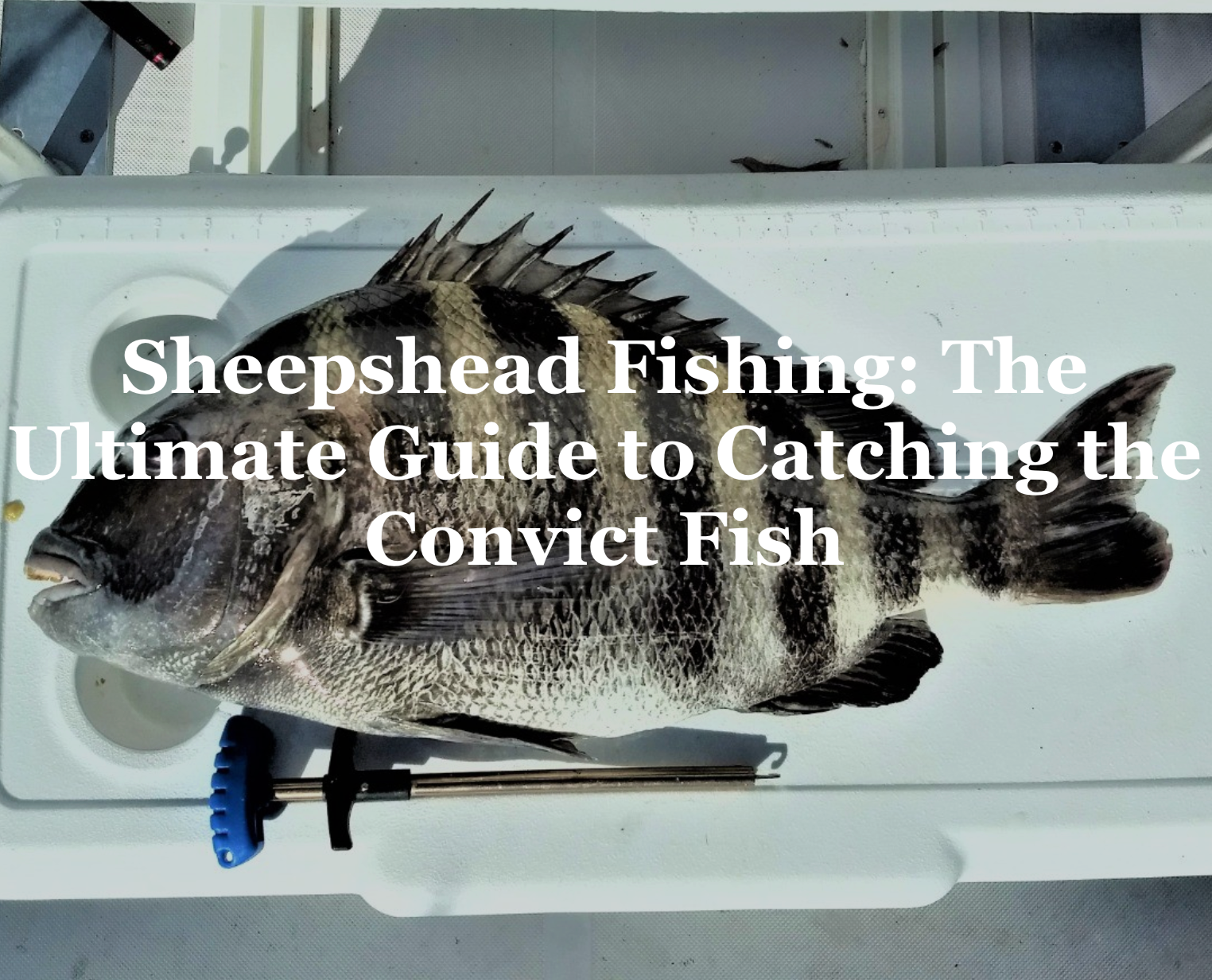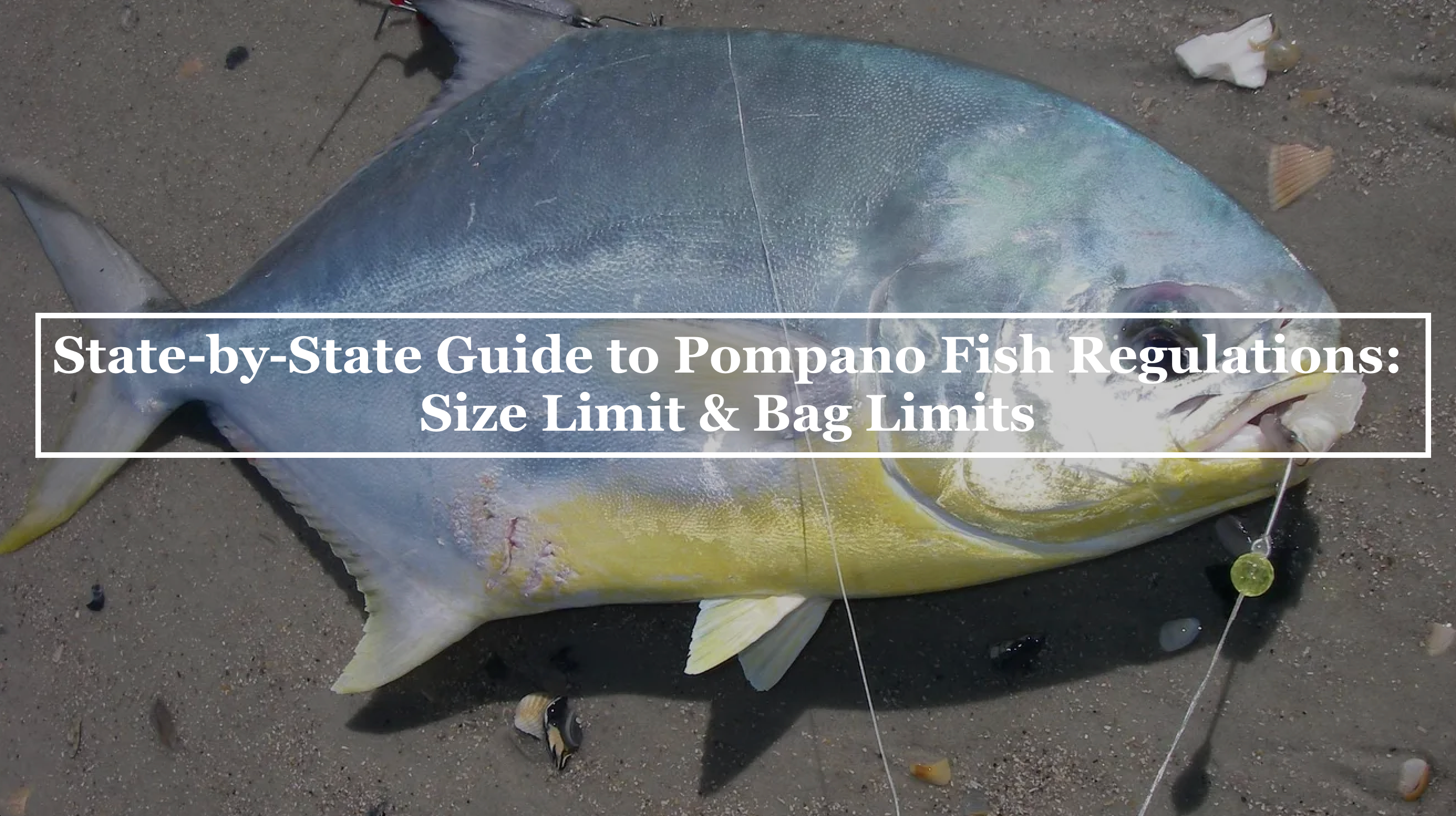If you’re an angler looking to master sheepshead fishing, you’ve picked a rewarding challenge. Known as the "convict fish" for its black-and-white stripes and bait-stealing prowess, sheepshead (Archosargus probatocephalus) offer a thrilling fight and delicious table fare. Found along the Atlantic and Gulf coasts, these crafty porgies demand skill, patience, and the right know-how. This ultimate guide dives deep into sheepshead fishing, covering everything from their habitat and behavior to the best techniques, tackle, and baits. Whether you’re a beginner or a seasoned pro, you’ll find actionable tips to boost your catch rate and make every trip a success.
What Makes Sheepshead Fishing So Special?

Sheepshead stand out in the inshore fishing world for their unique traits. With human-like teeth designed to crush crustaceans and mollusks, they’re built to forage around structure—think docks, jetties, and reefs. Averaging 2-5 pounds (though some hit 10+), they pack a punch with darting runs that test your gear and reflexes. Their reputation as bait thieves adds to the allure: hooking one feels like cracking a code.
Why do anglers love sheepshead fishing? It’s the perfect mix of strategy and reward. Plus, their flaky, sweet flesh rivals any saltwater delicacy. Ready to learn how to catch sheepshead? Let’s break it down.
Where and When to Go Sheepshead Fishing
Success in sheepshead fishing starts with knowing where and when to cast your line. These fish thrive in coastal waters from Nova Scotia to Brazil, but they’re most abundant along the U.S. Southeast and Gulf of Mexico, especially Florida.

Prime Sheepshead Habitats
- Inshore Structure: Sheepshead love pilings, bridges, docks, jetties, and oyster beds—anywhere crustaceans like barnacles and crabs congregate.
- Nearshore Reefs: In cooler months, they move to artificial reefs and wrecks in 20-50 feet of water.
- Surf Zones and Flats: Summer brings them into shallow grass flats and sandy troughs chasing crabs.
Seasonal Timing
- Winter (December-March): The golden season for sheepshead fishing. As water cools (60-70°F), they swarm inshore to spawn, gathering in big schools near structure. Look for them in passes and deep channels.
- Spring (April-May): Spawning peaks, and they’re aggressive nearshore and in inlets.
- Summer (June-August): They spread out to flats and shallow waters, feeding on crabs during high tides.
- Fall (September-November): A transition period—fish move back inshore as temperatures drop, making it prime time again.
Sheepshead Fishing Tip: Fish two hours before or after low tide when currents stir up food, making them more active.
Sheepshead Fishing Gear: What You’ll Need
Catching sheepshead requires tackle that balances sensitivity and strength. Their subtle bites and structure-hugging habits demand precision. Here’s your sheepshead fishing toolkit:

Rods and Reels
- Rod: A 6’6” to 7’ medium-action spinning rod with a fast tip. Sensitivity is key to feel their taps; power handles their runs.
- Reel: A 2500-3000 series spinning reel with smooth drag. Pair it with 15-20 lb braided line for zero stretch and better bite detection.
Terminal Tackle
- Hooks: Small #1 to 1/0 circle hooks or J-hooks. Their tiny mouths need a snug fit.
- Leader: 20-30 lb fluorocarbon (2-3 feet) for abrasion resistance near rocks and pilings.
- Weights: Use ¼ to 2 oz egg sinkers, bank sinkers, or jig heads, depending on current and depth.
Best Sheepshead Rigs
- Knocker Rig: A sliding sinker sits above the hook—great for vertical drops near structure.
- Carolina Rig: Egg sinker above a swivel with a leader—ideal for casting to flats or jetties.
- Jig Head Rig: A ¾ to 2 oz jig head (e.g., Bottom Sweeper Jig) keeps bait upright and snag-free.
Pro Tip: Fluorocarbon leaders beat monofilament for stealth and toughness—crucial for sheepshead fishing around sharp barnacles.
Best Baits for Sheepshead Fishing
Sheepshead’s diet—crustaceans and mollusks—dictates your bait choice. They’re picky, so presentation matters. Here are the top picks:

Live and Natural Baits
- Fiddler Crabs: The gold standard. Hook through the bottom near the legs, removing one claw to release scent.
- Shrimp: Live or frozen, cut into small pieces to fit their mouths. Thread securely to foil bait thieves.
- Sand Fleas (Mole Crabs): Abundant on beaches—perfect for surf fishing.
- Barnacles: Scrape off pilings and hook small chunks or use as chum.
- Clams/Oysters: Rig through the shell for a crunchy treat they can’t resist.
Artificial Options
- Jigs: Small crab or shrimp imitations (e.g., Gulp! Shrimp) on jig heads work when tipped with bait.
- Soft Plastics: Tiny swim baits mimic crabs in shallow water.
Sheepshead Fishing Technique: Hide the hook tip in the bait—exposed points spook them. Let it sit near structure, and watch for subtle line twitches.
How to Catch Sheepshead: Top Techniques

Mastering sheepshead fishing techniques means outsmarting their wariness. They nibble lightly, so timing is everything.
1. Bottom Fishing Near Structure
- Drop your rig straight down to pilings or rocks. Keep the line tight to feel the bite.
- When you sense a tap, wait a beat—then reel steadily to set the hook. Don’t jerk; their teeth crush bait fast.
2. Chumming for Success
- Scrape barnacles or crush oysters into the water upcurrent of your spot. This draws sheepshead in close.
- Cast your bait into the chum slick and let it drift naturally.
3. Surf Fishing
- Use a Carolina rig with sand fleas in troughs between sandbars. Cast beyond the breakers and retrieve slowly.
4. Jigging
- Bounce a jig head with a crab or shrimp along the bottom. The motion mimics fleeing prey, triggering strikes.
Sheepshead Fishing Tip: Patience is key. If you miss a bite, rebait and drop again—they’ll circle back.
Understanding Sheepshead Behavior

To excel at sheepshead fishing, know your quarry. Sheepshead are structure-huggers with sharp senses:
- Feeding Habits: They crush barnacles, crabs, and shrimp with their teeth, often spitting out hooks if they sense resistance.
- Spooking Easily: Clear water and heavy lines scare them—use light tackle and stealth.
- Seasonal Moves: Winter spawning aggregations make them predictable; summer scatters them.
Their intelligence makes every catch a trophy. Study tidal flows and water clarity to pinpoint active feeding times.
Sheepshead Fishing Hotspots
Here are prime locations for sheepshead fishing in the U.S.:
- Florida: Tampa Bay, St. Augustine, and the Keys—structure galore.
- Gulf Coast: Texas jetties and Louisiana oil rigs.
- Chesapeake Bay: Spring and fall at the Bay Bridge Tunnel.
- Check local reports for real-time bites, but any coastal structure is a good bet.
Regulations and Conservation
Before you hit the water, know the rules:
- Florida: 12-inch minimum, 8 fish per person daily.
- Virginia: No size limit, 4 per person.
- Always Check: Regulations vary by state and season.
Release undersized fish and respect bag limits—sheepshead are prolific but need sustainable harvesting.
Bonus: Sheepshead Fishing Tips for Beginners
- Feel the Bite: A sheepshead nibble feels like a faint tap-tap. Reel, don’t yank.
- Start Simple: Use a knocker rig with shrimp near a dock.
- Cook Your Catch: Grill with lemon and butter for a treat.
Why This is Your Go-To Sheepshead Fishing Guide

This isn’t just another article—it’s your blueprint for sheepshead fishing success. We’ve combined the best from top blogs—Fishing Booker’s practicality, Toadfish’s gear focus, and In The Spread’s depth—into one unbeatable resource. With detailed tackle advice, bait strategies, and seasonal tactics, you’re armed to outfish the rest. Next time you’re rigging up for sheepshead fishing, you’ll know exactly where to go, what to use, and how to hook those striped bandits.
Got a sheepshead story or tip? Drop it in the comments—we’d love to hear from you!




Share:
Pompano Fishing Regulations: Size Limit & Bag Limits
Sheepshead Fishing Regulations: Size Limits & Bag Limits by State
1 comment
Try using a bobberstopper to stop your 1/4 oz slip sinker 6 inches from a size 1 j hook with a shrimp head. Cast in the shallows around rock piles or jetty’s. South West Florida is on fire right now. I would love to post a picture right now but it doesn’t allow me to post one.